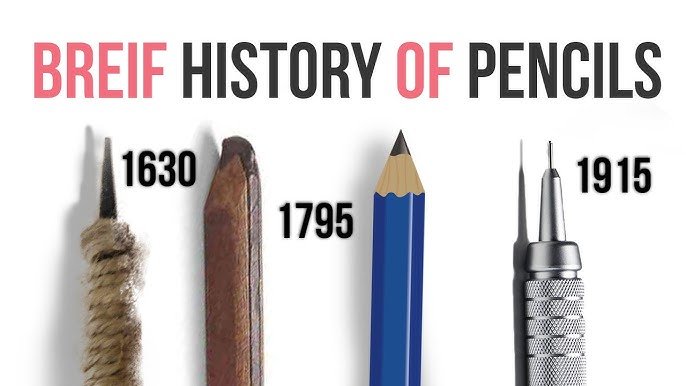
Since the 14th century, artists, for the most part, used sticks made from mixtures of lead and zinc, which were sometimes called “silver pencils.” For example, the great artist Botticelli used a similar pencil.
However, graphite pencils have been known since the 16th century. English shepherds from the Cumberland area found a dark mass in the ground, which they used to mark their sheep. Due to its color similar to that of lead, the deposit was mistaken for deposits of this mineral. But, having determined the unsuitability of the new material for making bullets, they began to produce thin sticks with pointed ends from it and used them for drawing. These sticks were soft, stained your hands, and were only suitable for drawing, not writing.
In the 17th century, graphite was usually sold on the streets. To make it more convenient and the stick not to be so soft, artists clamped these graphite “pencils” between pieces of wood or twigs, wrapped them in paper or tied them with twine.
The first document mentioning a wooden pencil dates back to 1683. In Germany, the production of graphite pencils began in Nuremberg. The Germans, by mixing graphite with sulfur and glue, obtained a rod that was not of such high quality, but at a lower price. To hide this, pencil manufacturers resorted to various tricks. Pieces of pure graphite were inserted into the wooden body of the pencil at the beginning and at the end, and in the middle there was a low-quality artificial rod. Sometimes the inside of the pencil was completely empty. The so-called “Nuremberg product” did not enjoy a good reputation.
The modern pencil was invented this year by the talented French scientist and inventor Nicolas Jacques Conte. At the end of the 18th century, the English Parliament introduced a strict ban on the export of precious graphite from Cumberland. For violating this prohibition, the punishment was very severe, including the death penalty. But despite this, graphite continued to be smuggled into continental Europe, which led to a sharp increase in its price. On instructions from the French Convention, Conte developed a recipe for mixing graphite with clay and producing high-quality rods from these materials. By processing at high temperatures, high strength was achieved, but even more important was the fact that changing the proportion of the mixture made it possible to make rods of different hardness, which served as the basis for the modern classification of pencils by hardness.
Modern leads use polymers, which make it possible to achieve the desired combination of strength and elasticity, making it possible to produce very thin leads for mechanical pencils (up to 0.3 mm). The
hexagonal shape of the pencil body was proposed at the end of the 19th century by Count Lothar von Fabercastle, noting that pencils were round sections often roll off inclined writing surfaces.
Almost 2/3 of the material that makes up a simple pencil goes to waste when sharpening it. This prompted the American Alonso Townsend Cross to create a metal pencil in 1869. The graphite rod was placed in a metal tube and could be extended to the appropriate length as needed.
This invention influenced the development of a whole group of products that are used everywhere today. The simplest design is a mechanical pencil with a 2 mm lead, where the rod is held by metal clamps (collets) - a collet pencil. The collets open when the button on the end of the pencil is pressed, which leads to extension to a length adjustable by the owner of the pencil.
Modern mechanical pencils are more advanced. Each time you press the button, a small section of lead is automatically fed. Such pencils do not need to be sharpened, they are equipped with a built-in eraser (usually under the lead feed button) and have different fixed line thicknesses (0.3mm, 0.5mm, 0.7mm, 0.9mm, 1mm).
